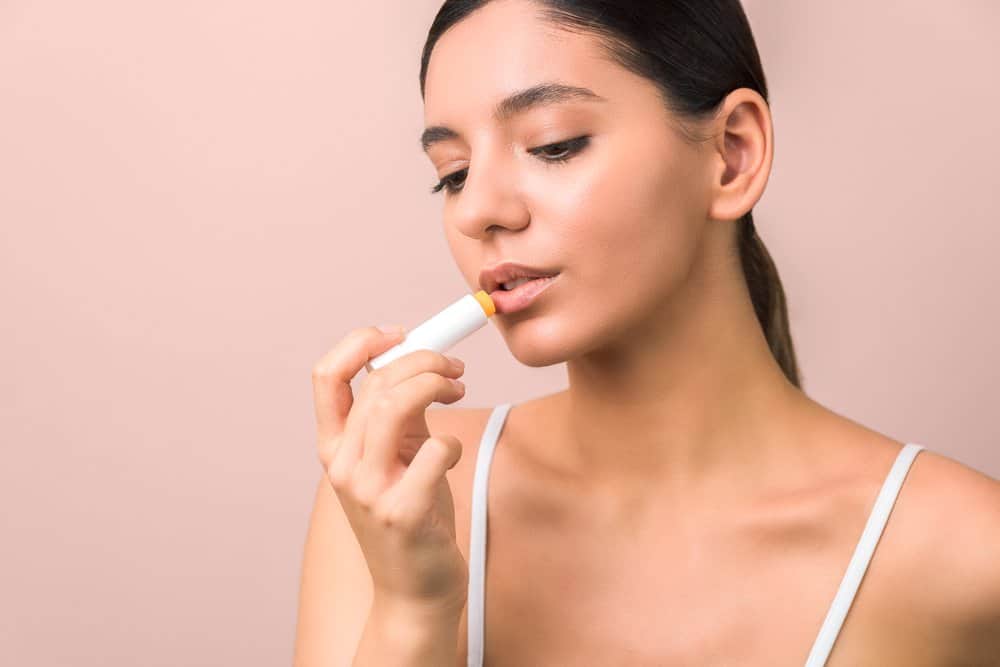When it comes to appearances, a beautiful smile can light up a room. It keeps you looking fresh, healthy, and happy. So if something changes your smile for the worse, it can have a devastating effect on your self-confidence.
Cracks and tears in the corners of your lips are pesky and unexpected. They can appear without warning and are often difficult to conceal with make-up. You might even worry that using make-up will worsen any irritation or possible infection. If this happens, you can wave goodbye to that hot date you had planned – you won’t be making any moves with lips like these.
Not to mention those dry, brittle lip corners can be painful. And without treatment, they are only likely to worsen, causing more pain and more potential embarrassment. So how do you get rid of those cracks and restore that winning smile?
What’s Causing Your Cracked Lip Corners?
First, it helps to identify what’s actually causing your unfortunate skin predicament.
Dryness & Irritation
In most cases, cracked lip corners are simply a case of mild irritation – usually caused by environmental changes – such as a sudden change in weather, humidity, or hydration.
Essentially, whenever your saliva dries out and irritates your skin, you become prone to crack lip corners. This initial irritation is then worsened by continuous touching and licking of the corners of the mouth. If this is the case for you – keep reading. The below treatments should help return your lips to their former glory in no time.
Suppose you have slightly more troublesome symptoms and your lips become infected with yeast or bacteria. In that case, you may have a case of angular cheilitis, sometimes also known as perleche, cheilosis, or angular stomatitis. Still, this is usually easily fixable. Here’s everything you need to know to heal your lips fast.
Angular Cheilitis
Angular cheilitis is a condition that causes the swollen, inflamed patches that can occur in one or both corners of the lips, and in rare cases, can even spread along the cheeks. These patches vary from a slight redness (or even purple) to blistering and bleeding cracks in your lip corners.
It’s common amongst people of all ages and, in most cases, is easily treatable. So try not to panic if you wake up one morning with ravaged lips. It also appears more frequently with age, so there will be a higher risk of it as people reach their 30s and 40s.
Common Causes
One big misconception is that angular cheilitis is caused by dry skin, but in fact, the opposite is true. It’s actually caused by too much saliva.
Yeast Infection / Oral Thrust
The most common cause is a yeast infection or oral thrush. Yeast is carried and aggravated by moisture, hence why it occurs in the corner of the lips. This is because your saliva easily gathers in the closed areas where the upper and lower lip meet.
Bacterial Infection
Bacteria is another cause, as it tends to grow and thrive in warm, wet, enclosed environments. The more your saliva travels into the corners of your mouth, the more opportunity there is for bacteria to start brewing. And just like that, you’ve got a mean case of cracked, infected lip corners.
Mineral/Vitamin Deficiency
Mineral and vitamin deficiencies are also common causes, particularly a lack of iron, zinc, or B vitamins.
Enabling Factors
A common factor shared by people with angular cheilitis is diabetes. Diabetes will weaken a person’s immune system enough that they can easily develop the kinds of yeast infections that cause angular cheilitis.
People with braces, dentures, retainers, irregular lip formation, auto-immune conditions, smokers, and those who take certain prescription medications may also be prone to the condition. If you’re one of these people, a doctor’s visit to identify the cause should be more useful than simple at-home remedies.
How Should You Treat Angular Cheilitis?
So you’ve got a nasty tase of angular cheilitis – now what? Let’s take a look at some of the fastest and most effective ways to heal those pesky lip lesions.
Topical Treatments
The most common treatments for cracked lips and lip corners are lip and skin products that you can use from home. Most of these topical treatments can be purchased over-the-counter at your local supermarket, pharmacy, or even from online stores. These treatments include:
Petroleum Jelly
Remember that adding moisture to cracked lip corners is only going to prolong any dryness and inflammation they already have. The best kind of at-home treatment is going to be the application of something that works as a moisture barrier between your lips and the saliva your mouth is producing.
Petroleum jellies such as Vaseline will do just that, as well as preventing further drying that might occur. The great news is that it’s relatively cheap, easily accessible and rarely causes allergic reactions.
Lip Balm
Certain types of lip balm and chapstick can also treat cracked lips effectively, preventing your lips from chapping further and allowing them to heal naturally. The best types to use will contain vitamin E or shea butter.

Vitamin E is very effective in soothing and healing dry or cracked skin. Shea butter also creates a barrier between skin and moisture and contains significant amounts of vitamin E.
Aloe Vera Gel
For a natural home remedy, pure aloe vera gel can help in soothing irritation and inflammation of your skin. It has also been shown to have antibacterial properties. Dabbing it on the corners of your lips 2 to 3 times a day should help you see some improvements.
Coconut Oil
Today coconut oil is a hugely popular treatment for many beauty and health issues. So it should be readily accessible from your local grocery store, and you may even have a jar of the stuff in your bathroom or kitchen already. Not only that, but once your lips are healed there are still a million other things you can use it for.
Coconut oil functions in the same way as petroleum jelly and vitamin E, barring saliva from making contact with the lips and outer skin. It’s relatively inexpensive and can be used as many times as needed. Liquid or solid coconut oil is fine, and you should only need a small dab to cover the whole of the lips and lip corners. Just be conservative with your application – coconut oil can clog the pores of certain skin types and potentially cause pimples.
Steroid Creams
Other causes of angular cheilitis are bacterial infections, such as Staph aureus and B-hemolytic strep. If this is the cause of your cracked lips, a doctor may recommend either a hydrocortisone steroid cream that can be purchased over-the-counter or, if the case is severe, a more heavy-duty steroid cream by prescription.
Creams With Butenafine 2%
Or in other words, the same creams you use to treat athlete’s foot. It may sound strange, and yes, even a little icky to use foot cream on your lips, but you can always use it as a last resort if other direct treatments aren’t working.
Butenafine has antifungal properties, so butenafine-based foot creams such as Lotrimin Ultra, Mentax, and Butop, can be effective against angular cheilitis. This does depend on whether your cracked lips are caused by a yeast infection, so you want to consult your doctor before use.
Oral Treatments
In addition to the topical treatments mentioned above, more severe cases of cracked lips may benefit from oral treatment.
Antibiotics
If you have a bacterial infection and topical steroid and antifungal creams have failed to heal your lips, a doctor will prescribe a series of antibiotics to treat them. This should lessen or even erase the effects of angular cheilitis on your lips within a few days.
Yogurt
This one is a surprising and delicious way to treat both your lips and your stomach. The active cultures found in plain yogurt can help to fight both bacterial and yeast infections. By eating a few tablespoons of plain yogurt (without natural sweeteners) or simply applying it to the corners of your lips, you can start the healing process without medical intervention.
Just remember that yogurt only helps if your lip afflictions are caused by infection, which should technically be diagnosed by your doctor. Its effects are also slower and weaker than antifungal creams or antibiotics will be.
How Can I Avoid Cracked Lip Corners in the Future?
As mentioned above, angular cheilitis can be chronic and recurring in some people. So, it’s important to take careful pre-emptive measures to protect your lips in the future. These measures can include:
Dietary Changes
Changes to your diet will depend on the cause of your cracked lip corners and will be recommended at your doctor’s discretion. They may even recommend lowering your sugar intake, as yeast can actually feed on the sugar in your mouth.

If the lesions appear resistant to topical treatments and antibiotics, you likely have a nutrient deficiency, either of iron, zinc, or B vitamins. If your doctor identifies any of them as the cause, a change in diet will be in order. New additions to your diet may include:
- Iron-rich foods such as fish, seafood (particularly clams, mussels, and oysters), beef, chicken, turkey, spinach, dark chocolate, and legumes.
- Vitamin B supplements, or foods containing the 8 B vitamins, such as eggs, salmon, liver, beef, yogurt, and more.
- Foodstuffs that are high in zinc, including seeds, nuts, legumes, meat, shellfish, and whole grains.
Identifying and addressing your nutrient deficiencies can help you to avoid a repeat case further down the road.
Avoid Touching the Problem Area
This should be obvious, but it may be harder than you think. People dealing with angular cheilitis will often touch the corners of their lips with their tongue. Don’t worry – it’s a natural reflex, and many people with this issue will lick the corners of their mouth frequently without realizing it. Just keep in mind that this will irritate the cracks in your lips if you do it compulsively.
Pay attention when you catch yourself doing it. Drawing attention to compulsive behavior will help you to notice when it reoccurs and to avoid repeating it continuously. Again, if you are applying a protective treatment like petroleum jelly or coconut oil, this can minimize the effects of frequent touching.
Fillers & Injections
It may sound like an unlikely treatment for a medical condition, but if recurring cases of angular cheilitis are caused by the shape of your lips, cosmetic fillers to change your lip shape may be the best permanent solution.
They can help to lift “droopy” lips, which should prevent more infections in the corners of the lips. Of course, such cosmetic alterations for medical purposes should only be undertaken by the recommendation of your doctor.
Good Hygiene
Good oral hygiene is always a smart idea, even if your lips are in perfect condition. This is particularly true if you are at risk of a yeast or bacterial infection. Clean teeth, tongue, and gums should help to decrease the spread of yeast and bacteria.

Your Lips: Everything They’re Cracked up to Be
If you’ve tried the above at-home remedies and don’t see results within a week, visit your doctor to find any underlying causes. Your lips might just be drying out due to a minor infection or because of nutritional deficiencies that could be causing other health issues.
Either way, your doctor is going to identify the best ways to counter these issues. Not only that, but they’ll advise you on how to prevent angular cheilitis from cursing your lips in the future.
If you have problems with cracked and sore lip corners, try not to let it get you down. Remember that angular cheilitis isn’t a serious condition in itself, and it can often be treated even without a doctor’s intervention (though we still recommend a visit). As long as you follow the steps outlined above, you’ll have your clear skin and gorgeous smile back in no time.
